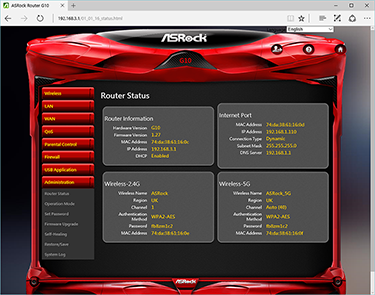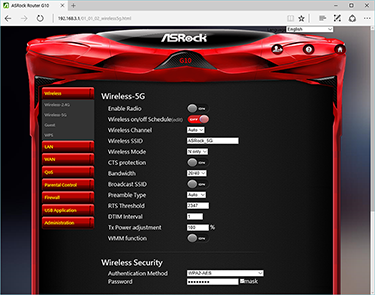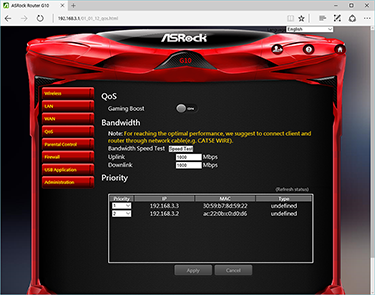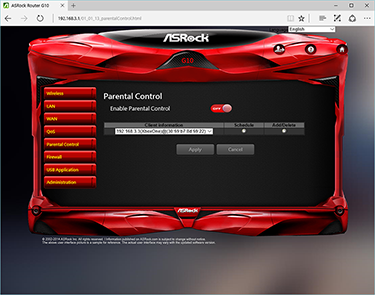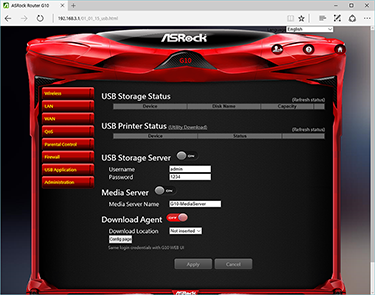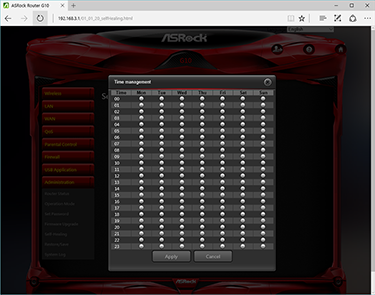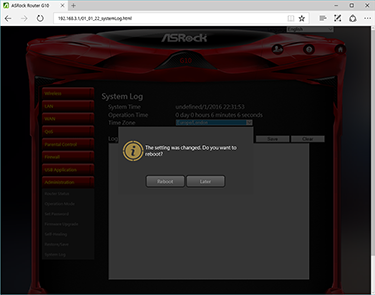User Experience
We've spent enough time with ASRock motherboards to know that the company can create a clean, logical user interface, but when navigating the G10 admin panel it becomes clear that this is a work in progress.
Initial setup is carried out by pointing any connected web browser to ASRock.Router, yet while the G10 is ultimately straightforward to configure, the interface as a whole leaves something to be desired with regards to polish and presentation.
It's a classic case of Winamp, in that well-thought-out controls and simple navigation options have become unnecessarily cluttered by what's ultimately an ostentatious skin. We can understand ASRock's desire to implement a gamer look and feel, however the end result here is a lot of unused space and the admin panel falls short of the standard being set by other router manufacturers.
A shame, really, as the available configuration options cover most everyday usage scenarios. The 2.5GHz and 5GHz wireless SSIDs are pre-configured and enabled by default on an automatic channel selection, but changing any of the variables requires just a couple of clicks. Should you prefer to do so, both networks can be given the same SSID, leaving it up to your devices to select the best choice.
Another well-publicised feature is 'Gaming Boost,' an automatic QoS implementation that is designed to prioritise traffic from gaming devices. Unfortunately, Gaming Boost is lacking any form of explanation or documentation, and users merely have a choice of turning it on or off. We've had it enabled for a number of days, and at this moment in time our Xbox One is fifth in the list of prioritised devices, behind a Synology NAS and a Philips Hue hub.
A built-in Parental Control system allows for Internet access to be limited using a time schedule on a per-device basis, but there doesn't appear to be an option to restrict specific content.
There's clearly room for the available features to be expanded, however the available USB options work well. ASRock provisions for an attached printer or USB storage, and there's a built-in DLNA media server for sharing multimedia content across your network.
At this stage, ASRock's user interface is serviceable but not entirely satisfying. Looking ahead, we'd like to see a sleeker interface combined with tooltips that help guide users through the available settings - as it stands, there's one all-encompassing help icon that serves only as a redirect to the G10 product page.
These are for the most part minor niggles, however our biggest bugbear is that applying practically any change in settings requires a system reboot. This alone makes configuration a laborious process, yet on a more positive note the dual-core processor makes the interface feel quick during use, and ASRock is actively developing firmware updates so we'd expect many of the aforementioned wrinkles to be ironed out in the months ahead.







